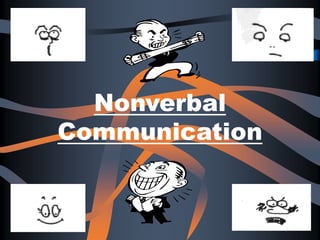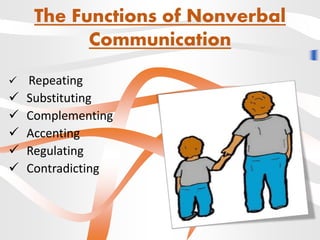This document discusses nonverbal communication. It defines nonverbal communication as communication expressed through means other than words, such as body language, vocal tones, eye contact, touch, and use of space. The document outlines characteristics of nonverbal communication, such as its ambiguity and cultural influences. It describes different types of nonverbal communication including facial expressions, gestures, touch, paralanguage, use of space, and physical appearance. Guidelines are provided for improving nonverbal communication skills and awareness.

































